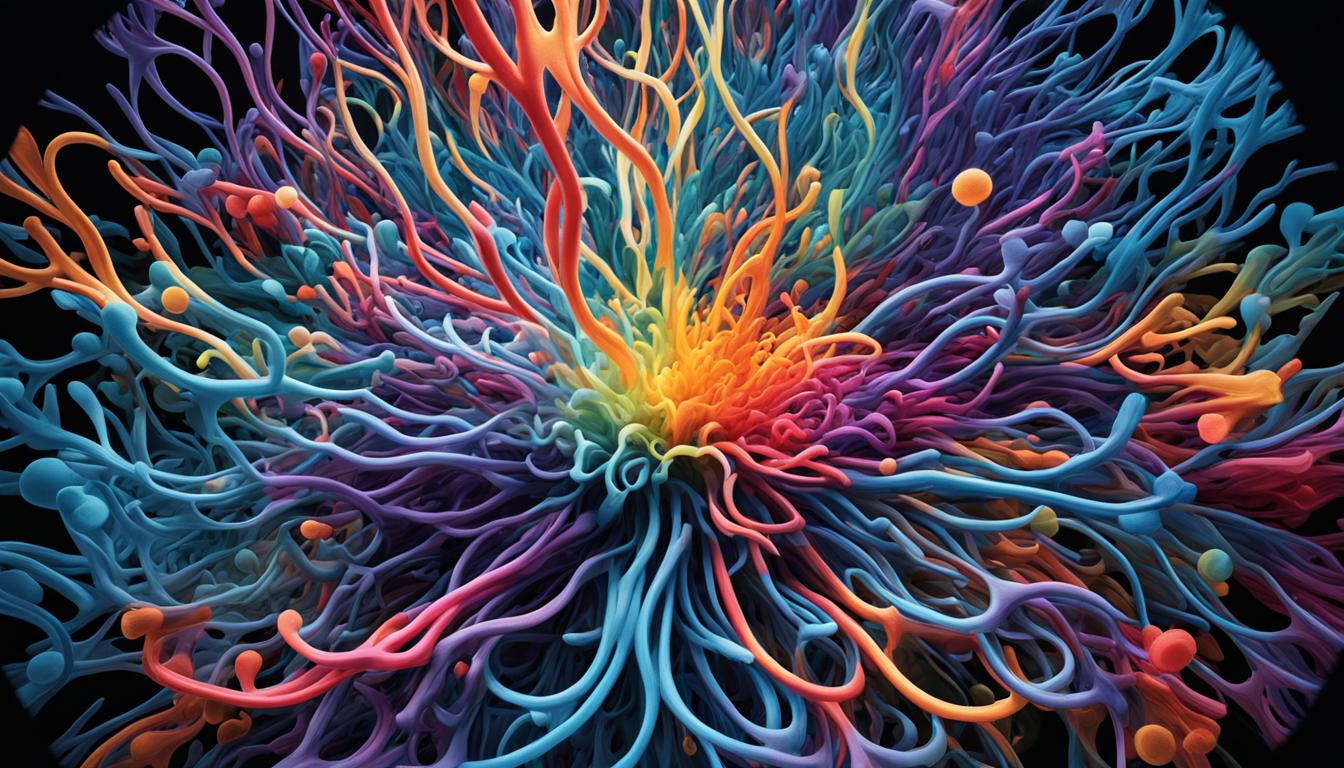Dementia is a common neurological condition worldwide. It mainly includes Alzheimer’s disease (AD) and Parkinson’s disease (PD). However, there is another kind known as Dementia Lewy body disease (DLB). It is marked by Lewy bodies in the brain. These Lewy bodies affect brain function, causing issues with thinking, movement, behavior, mood, and more.
DLB impacts both genders after the age of 50. It is a disease that gets worse with time. Diagnosing DLB early can be tough because it mimics symptoms of Alzheimer’s and other brain diseases. While there are limited treatments, there is hope from stem cell therapy. Animal studies suggest it could help with DLB. However, more research and clinical trials are needed to confirm its effectiveness.
Key Takeaways:
- Dementia Lewy body disease (DLB) is a type of dementia characterized by abnormal protein deposits called Lewy bodies in the brain.
- DLB can cause problems with thinking, movement, behavior, mood, and other bodily functions.
- Diagnosing DLB can be challenging due to overlapping symptoms with other brain diseases.
- Treatment options for DLB are limited, but stem cell therapy shows promise in modifying degenerative alterations associated with the disease.
- Further research and clinical trials are needed to establish the efficacy of stem cell therapy in treating DLB.
Symptoms and Diagnosis of Dementia Lewy body disease
Signs of Dementia Lewy body disease are different for everyone. It’s key to spot the many ways it can show. Key symptoms usually include:
- Cognitive changes, like memory loss, confusion, and struggles with focus and solving problems.
- Seeing things that aren’t real, known as visual hallucinations.
- Issues with movement such as slow movements, stiff muscles, and tremors.
- Sleep problems, like finding it hard to sleep or feeling too sleepy during the day.
- Fluctuations in being alert or focused, leading to confusion at times.
- Feeling down or not caring much, which are signs of depression and apathy.
- Problems regulating things like blood pressure, heart rate, and body temperature.
Diagnosing this disease is tough since it’s symptoms often look like those of other dementias. Doctors use a detailed process to make sure they get it right. They might:
- Do a deep dive into your symptoms, considering everything from memory problems to unusual movements.
- Review your medical history closely, looking at how symptoms have changed over time.
- Rule out other possible causes by doing certain tests and checking your brain with imaging.
These steps help tell DLB apart from other diseases that might seem similar, ensuring you get the right care.
It’s key to know what to look for and get a correct diagnosis. Doing so early on allows for treatments and help that can make life better for those with DLB.
Differences Between Dementia Lewy body disease and Other Dementias
| Dementia Type | Key Features |
|---|---|
| Dementia Lewy body disease (DLB) |
|
| Alzheimer’s disease (AD) |
|
| Vascular dementia (VaD) |
|
| Parkinson’s disease dementia (PDD) |
|
Stem Cell Therapy for Dementia Lewy body disease
Stem cell therapy shows promise in treating Dementia Lewy body disease. It involves the use of both adult and embryonic stem cells. These types of cells can repair and change into different cell kinds.
Mesenchymal stem cells (MSCs) are often studied for DLB. This research includes both bone marrow-derived MSCs (BMMSCs) and adipose-derived MSCs (ADMSCs). In studies involving animals and people, these MSCs can help repair damage in the brain.
There are concerns about using embryonic stem cells because of ethical issues and the potential to form cancer-like cell growth. It’s important to conduct more research and tests on stem cell therapy. This way, we can understand if it’s a good treatment option for Dementia Lewy body disease.

